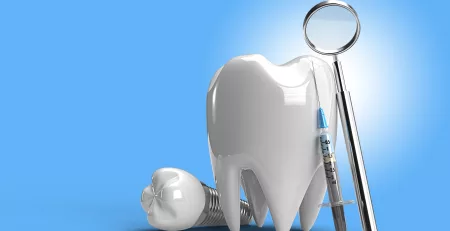A Comprehensive Review of Whitening Toothpastes
Introduction
If you are looking for a simple and effective way to brighten your smile, you may have considered using a whitening toothpaste.
Whitening toothpastes are toothpastes that contain ingredients that help to remove surface stains from the teeth and make them appear whiter.
However, with so many brands and products available on the market, how do you choose the best whitening toothpaste for your needs?
In this article, we will review the main features, benefits, and drawbacks of whitening toothpastes, and provide some recommendations based on our research and testing.
How do whitening toothpastes work
Whitening toothpastes work by combining mechanical and chemical actions to clean and whiten the teeth.
The mechanical action is provided by the abrasives in the toothpaste, which physically scrub away stains and plaque from the teeth surface.
The chemical action is provided by the whitening agents in the toothpaste, which chemically bleach the teeth and remove stains.
The most common abrasives in whitening toothpastes are silica, calcium carbonate, baking soda, or charcoal.
These substances help to polish the teeth and remove stains caused by things like coffee, tea, wine, or tobacco. However, abrasives should be gentle enough to avoid damaging the enamel or causing sensitivity.
The abrasiveness of toothpaste is measured by the Relative Dentin Abrasivity (RDA) scale, which ranges from 0 to 250. The lower the RDA value, the less abrasive the toothpaste is. According to the American Dental Association (ADA), an RDA value of up to 250 is safe for daily use¹.
The most common whitening agents in whitening toothpastes are hydrogen peroxide or carbamide peroxide.
These substances help to bleach the teeth and remove stains that are deeper than the surface level. However, whitening agents should be used in low concentrations to avoid irritating the gums or causing sensitivity.
The concentration of peroxide in whitening toothpastes is usually between 0.1% and 1%, which is much lower than the concentration used in professional or at-home whitening treatments².
What are the benefits of whitening toothpastes?
Whitening toothpastes provide an additional benefit of improving the appearance of your smile by making your teeth whiter and brighter. Some of the benefits of whitening toothpastes are:
They are easy to use:
Whitening toothpastes are convenient and simple to use. You just need to brush your teeth with them twice a day as part of your regular oral hygiene routine. You don’t need any special equipment or extra time to use them.
They are affordable:
Whitening toothpastes are relatively inexpensive compared to other whitening methods. You can find them in most supermarkets, pharmacies, or online stores for a reasonable price. You don’t need to spend a lot of money to get a whiter smile.
They are effective:
Whitening toothpastes can help you achieve noticeable results in a short period of time. According to a study published in the Journal of Clinical Dentistry, using a whitening toothpaste can lighten your teeth by one shade in four weeks³.
Whitening toothpastes can also prevent new stains from forming by strengthening the enamel and making it less porous and more resistant to staining agents.
What are the drawbacks of whitening toothpastes?
Whitening toothpastes are not without some limitations and risks. Some of the drawbacks of whitening toothpastes are:
-They have limited effects:
Whitening toothpastes can only remove surface stains and cannot change the natural colour of your teeth. If you have intrinsic stains caused by factors such as aging, medication, trauma, or fluorosis, whitening toothpastes may not be effective for you.
You may need to consult your dentist for other whitening options that can penetrate deeper into the enamel and dentin layers.
They may cause sensitivity or irritation:
Whitening toothpastes may cause some side effects such as sensitivity or irritation in some people. This is because the abrasives or peroxides in whitening toothpastes may erode the enamel or irritate the gums if used too frequently or too long.
If you experience any discomfort or pain when using a whitening toothpaste, you should stop using it and consult your dentist.
They may contain harmful ingredients:
Some whitening toothpastes may contain ingredients that may have harmful effects on your health or the environment. For example, some whitening toothpastes may contain sodium lauryl sulfate (SLS), which is a detergent that can cause dryness or canker sores in some people⁴.
Some whitening toothpastes may contain triclosan, which is an antibacterial agent that can disrupt hormone balance and increase the risk of breast cancer, as well as contribute to antibiotic resistance and environmental pollution⁵.
Some whitening toothpastes may contain artificial colours, Flavours, or sweeteners, which can cause allergic reactions, hyperactivity, or cancer in some people⁶. You should always read the label and check the ingredients of any toothpaste that you buy.
How to choose the best whitening toothpaste?
When choosing a whitening toothpaste, you need to consider several factors such as your oral health condition, your personal preference, and your environmental impact. Here are some tips on how to choose the best whitening toothpaste for your needs:
Look for ADA seal of acceptance:
The ADA seal of acceptance is a voluntary program that evaluates the safety and effectiveness of oral care products. If a toothpaste has the ADA seal of acceptance, it means that it meets the ADA criteria for quality and performance. You can trust that a toothpaste with the ADA seal of acceptance will not harm your teeth or gums and will deliver the results that it claims. You can find a list of ADA-accepted whitening toothpastes on the ADA website.
Look for natural and organic ingredient:
If you want to avoid synthetic chemicals and enjoy a natural and eco-friendly smile, you should look for toothpastes that contain natural and organic ingredients that are derived from plants, minerals, or animals.
Some examples of natural and organic ingredients are coconut oil, baking soda, xylitol, green tea extract, or essential oils.
You should also look for certifications from reputable organizations, such as USDA Organic, Ecocert, or COSMOS, that verify the quality and origin of the ingredients.
Look for low-abrasive options:
If you have sensitive teeth or enamel erosion, you should look for toothpastes that have a low RDA value and do not contain harsh abrasives that can damage your teeth or cause pain.
Some examples of low-abrasive ingredients are silica, calcium carbonate, or bamboo powder. You should also look for toothpastes that contain anti-sensitivity agents that help to block the tubules in the dentin and reduce the nerve transmission, such as potassium nitrate or strontium chloride.
Look for other benefits:
Besides the basic function of whitening your teeth, some toothpastes may offer other benefits that suit your oral health needs and preferences. For example, if you have plaque or gingivitis, you may want to use a toothpaste that contains anti-plaque or anti-gingivitis agents that reduce the formation of plaque and tartar and prevent gum inflammation, such as zinc citrate or triclosan.
If you have bad breath, you may want to use a toothpaste that contains freshening agents that neutralize odours and refresh your breath, such as peppermint extract or xylitol.
Our recommendations
Based on our research and testing, here are some of the best whitening toothpastes that you can buy online:
Overall:
Colgate Optic White Renewal Toothpaste. This toothpaste contains 3% hydrogen peroxide, which is the highest concentration available in a whitening toothpaste.
It claims to remove up to 10 years of yellow stains in four weeks. It also has a low RDA value of 90 and a refreshing mint flavour. It has the ADA seal of acceptance and positive reviews from users who noticed visible results.
Best for sensitive teeth:
Sensodyne Pronamel Gentle Whitening Toothpaste. This toothpaste contains potassium nitrate, which helps to reduce sensitivity by blocking the nerve signals in the teeth. It also contains fluoride, which helps to strengthen the enamel and prevent cavities. It has a low RDA value of 34 and a mild mint flavour.
It has the ADA seal of acceptance and positive reviews from users who experienced less pain and discomfort when using this toothpaste.
Best natural option:
Hello Naturally Whitening Fluoride Toothpaste. This toothpaste contains natural ingredients such as coconut oil, xylitol, stevia, tea tree oil, and peppermint oil. It does not contain any SLS, triclosan, artificial colours, Flavours, or sweeteners. It has a moderate RDA value of 103 and a pleasant mint flavour. It has positive reviews from users who liked its natural formula and effectiveness.
Conclusion
Whitening toothpastes are toothpastes that contain ingredients that help to remove surface stains from the teeth and make them appear whiter.
Whitening toothpastes work by combining mechanical and chemical actions to clean and whiten the teeth. Whitening toothpastes provide an additional benefit of improving the appearance of your smile by making your teeth whiter and brighter. However,
Source:
(1) Colgate.com
(2) 11 best whitening toothpastes for whiter teeth, tried and tested | The …. https://www.independent.co.uk/extras/indybest/fashion-beauty/beauty/best-whitening-toothpaste-uk-reviews-b1783716.html.
(3) The 8 Best Whitening Toothpastes of 2023 – Verywell Health. https://www.verywellhealth.com/best-whitening-toothpastes-5189815.
(4) Teeth Whitening Strips, Gels, Toothpaste, Bleaching, and More. https://www.webmd.com/oral-health/teeth-whitening.
(5) The 9 best whitening toothpastes of 2023, per dentists – New York Post. https://nypost.com/article/best-whitening-toothpastes-per-dentists/.
(6) 8 Best Whitening Toothpastes of 2023, According to Dentists. https://www.goodhousekeeping.com/health-products/g44176844/best-whitening-toothpastes/.








Leave a Reply